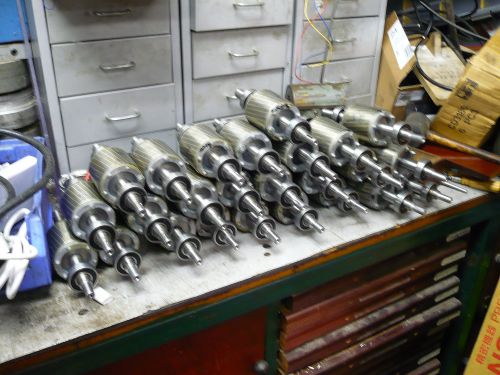I'm trying to convert my newly acquired milling machine to run on the electrics I have in my garage. Plan is to run the horizontal head/table feed from a single phase motor and leave the vertical head as 3 phase and run this from an inverter for the variable speed facility.
I have a single phase motor of the right size but the spindle is too big for the step pulley. Boring out the pulley isn't really on option so I'm hoping to be turn down the spindle from 24mm to 20mm but have a few questions
1. I've never taken a motor apart but I'm guessing the spindle is integral to the motor and not something I can remove to put in the lathe chuck ?
2. Assuming the above to be correct, I thought I might clamp the entire motor to the lathe bed and use the motor itself to turn the spindle. Motor speed is 1425rpm is this going to be too fast to work in practice.
3. The spindle has a keyway, if I limit my DOC to 0.005" will this overcome the problem of interrupted cut
4. Any better suggestions always welcome (before anybody says it I have got my eye out for a suitable sized motor/spindle combo)
Thanks
Jim
I have a single phase motor of the right size but the spindle is too big for the step pulley. Boring out the pulley isn't really on option so I'm hoping to be turn down the spindle from 24mm to 20mm but have a few questions
1. I've never taken a motor apart but I'm guessing the spindle is integral to the motor and not something I can remove to put in the lathe chuck ?
2. Assuming the above to be correct, I thought I might clamp the entire motor to the lathe bed and use the motor itself to turn the spindle. Motor speed is 1425rpm is this going to be too fast to work in practice.
3. The spindle has a keyway, if I limit my DOC to 0.005" will this overcome the problem of interrupted cut
4. Any better suggestions always welcome (before anybody says it I have got my eye out for a suitable sized motor/spindle combo)
Thanks
Jim








